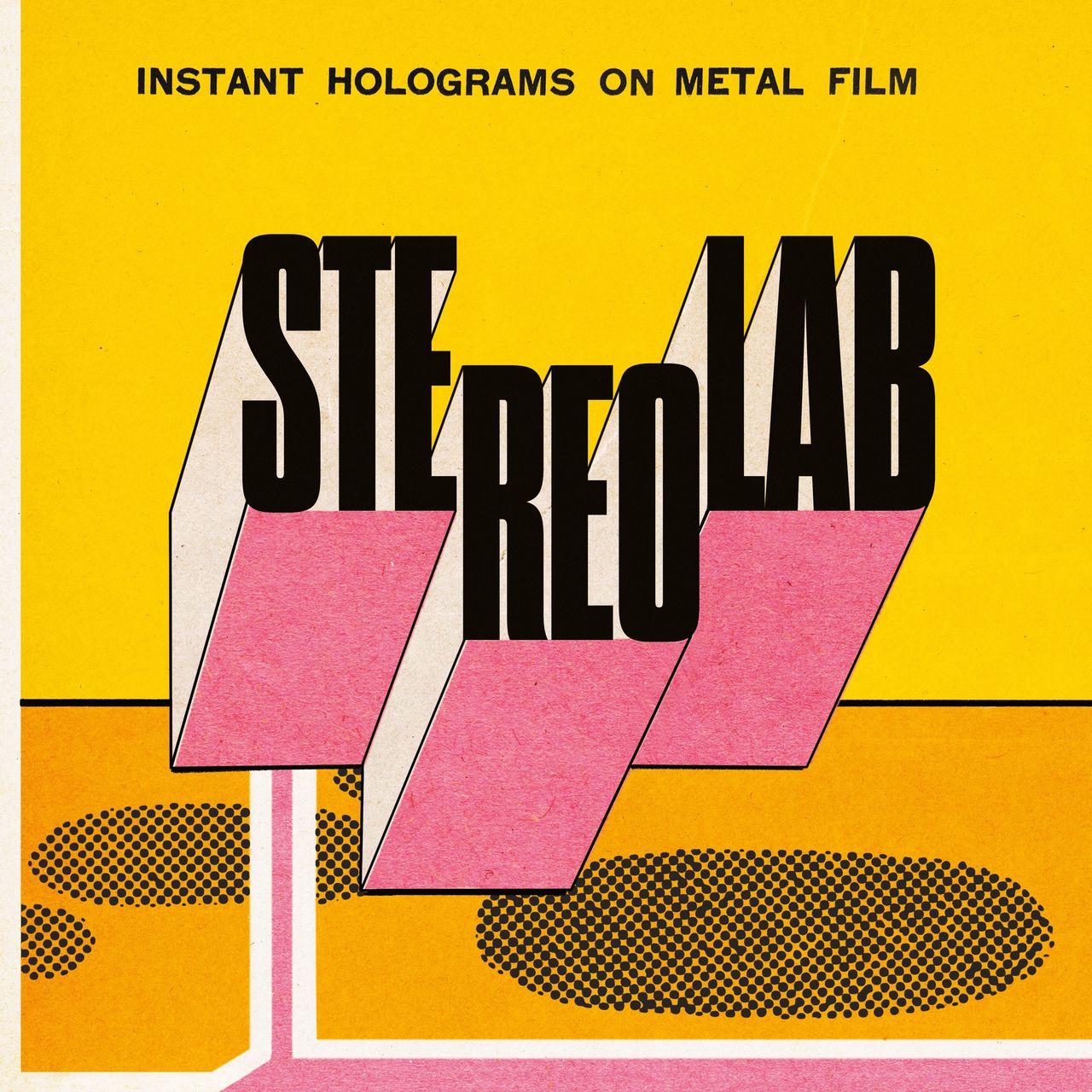What are Stereolab, exactly? Folding seemingly incompatible elements into a blend that’s both natural and outlandish, the veteran post-rockers have never been easy to define—they only stopped evolving when they hung up their hat in 2009. The Groop regrouped in 2019; Instant Holograms on Metal Film is the band’s first studio album in 15 years. But despite a tracklisting that reads almost like parody—“Mystical Plosives,” “Vermona F Transistor,” the quintessentially ’Lab-esque “Esemplastic Creeping Eruption”—the record doesn’t suggest any particularly easy answers.
We know who they are: guitarist Tim Gane, singer Laetitia Sadier, and a cast of bandmates gathered around the former romantic couple’s Anglo-French alliance. We know that they formed in London in the early ’90s and powered through a raft of studio albums before splitting in 2009. But the band’s fundamental essence has always been difficult to capture: a slippery mixture of krautrock, yé-yé, electronics, easy listening, avant-garde collage, and left-wing politics that shifts, twitches, and mutates whenever you get it under the microscope. Stereolab are relentlessly shape-shifting—yet they always sound exactly like themselves.
Instant Holograms on Metal Film brings a new producer (Bitchin Bajas’ Cooper Crain), new musicians (jazz cornetist Ben LaMar Gay, percussionist Ric Elsworth), and new vocalists (including Marie Merlet, formerly of Sadier’s Monade) into the Stereolab orbit. Nevertheless, the album sounds resolutely Stereolab. Most of the key qualities that define the band are present and correct—motorik chug, bubbling Moogs, odd analog squiggles, and, above all, Sadier’s vocals, cool but engaged, glowing with the discreet passion of a hotel lobby rendezvous. The record also has touches of the radical vocal interplay that Sadier and the late Mary Hansen perfected in Stereolab’s mid-’90s imperial phase, when the two singers transcended rockist ideas of lead and backing vocal in favor of a gorgeously interlaced, ego-free fusion.
The band’s characteristic mid-song switch-ups also appear frequently, swaggering in with the unexpected emotional jolt of a visit from a friend you’d forgotten you missed. Halfway through “Immortal Hands,” a strutting drum-machine rhythm kicks the hitherto languid song into a newly animated phase. “Melodie is a Wound,” meanwhile, adds a sunny Beach Boys-and-synths coda to the song’s baroque melancholia that builds to a furiously fuzzed-up climax. At moments like these, Stereolab’s music feels both intricately planned and strangely loose, with the telepathic connection of a well-drilled jazz quintet or a jam band with decades of experience in the collective fanny pack.
But as soon as you zoom in a little and try to work out exactly which Stereolab records Instant Holograms on Metal Film reminds you of, the possibilities spiral out of control. The album is animated by the great electrical thrust of early Stereolab, for instance in the galloping motorik beat of “Electrified Teenybop!” (albeit minus the visceral guitar rush of those first records); it sports the influence of jazz, which bubbles up through the bewitching chord progressions of “Immortal Hands”; there are Dots and Loops electronic touches on “Mystical Plosives” and the even more Dots-esque marimba on “Immortal Hands”; not to mention the the plasticky, retro-futuristic charm of the antiquated drum-machine tick on “Colour Television.” Instant Holograms on Metal Film sounds like the Platonic idea of Stereolab, rather than being a repeat of any particular LP, which is a neat trick for a reunion album to pull off.
